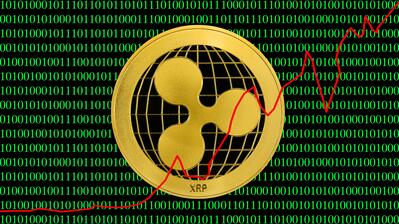Ahead of Jackson Hole, Wall Street Question the Case for Fed Rate Cuts

TradingKey - As markets eagerly await Federal Reserve Chairman Jerome Powell's speech at the Jackson Hole Symposium this Friday, any signals he delivers will be closely scrutinized for insights into future monetary policy.
Currently, the market perceives an 84.8% probability of a rate cut by the Fed in September, driven by moderate inflation in July and weak recent employment data.
However, several major Wall Street banks are voicing opposing views. Some argue that the rationale for a Fed rate cut is lacking, while others suggest that Powell will withhold clear signals during the meeting.
Inflation Risks Remain Elevated
According to analysts at Bank of America (BoA), one reason the Fed should hold steady is that core CPI remains above 3%. The latest data reveal a 3.1% year-on-year increase in the U.S. core CPI for July, surpassing June's 2.9%, with notable rises in core services and moderate increases in core goods prices.
BoA posits that the temporary weakness in core goods prices has masked some inflation pressures, but businesses are likely to pass tariff costs onto consumers gradually. Goldman Sachs echoes this sentiment, predicting that by October, consumers will bear 67% of tariff costs, with businesses absorbing less than 10%, which will directly elevate inflation.
BoA contends there is insufficient evidence to suggest that inflation has peaked, forecasting the core PCE price index could rise to 2.9% this month and further exceed the Fed's 2% target.
Labor Market Resilience Persists
Despite a slowdown in job growth, BoA attributes this to an improved labor supply, which supports economic activity and thus does not erode household income resilience. The bank believes the labor market remains robust, providing Powell with ample reason to maintain a firm stance, potentially defying current market expectations for easing.
Barclays notes that despite dismal nonfarm payroll data released in early August, Powell's hawkish rhetoric following the July rate decision remains unchallenged. He remarked that, considering revisions, the actual pace of job growth might be close to zero, yet the unemployment rate remains low. According to Powell, the Fed is more focused on the unemployment rate rather than the number of jobs added.
U.S. nonfarm payrolls for July saw a sharp decline, with significant downward revisions for May and June, but the unemployment rate rose to 4.2%, aligning with expectations. This data supports Powell's view, suggesting he may not shift towards signaling explicit easing.
Potential Allusions to Policy Easing, But Overall Approach Remains Cautious
Even investment banks anticipating a September rate cut from the Fed remain skeptical that Powell will provide explicit signals on Friday. Nomura Securities suggests that given the economic data releases preceding the meeting, Powell is unlikely to convey a clear signal on Friday. While there may be hints of policy easing, the overall stance is expected to remain cautious.
JPMorgan indicates that although the weak employment data might incline the Fed towards a September rate cut, the absence of recent advocacy for such measures by Fed speakers suggests Powell will not decisively guide towards an easing policy.







